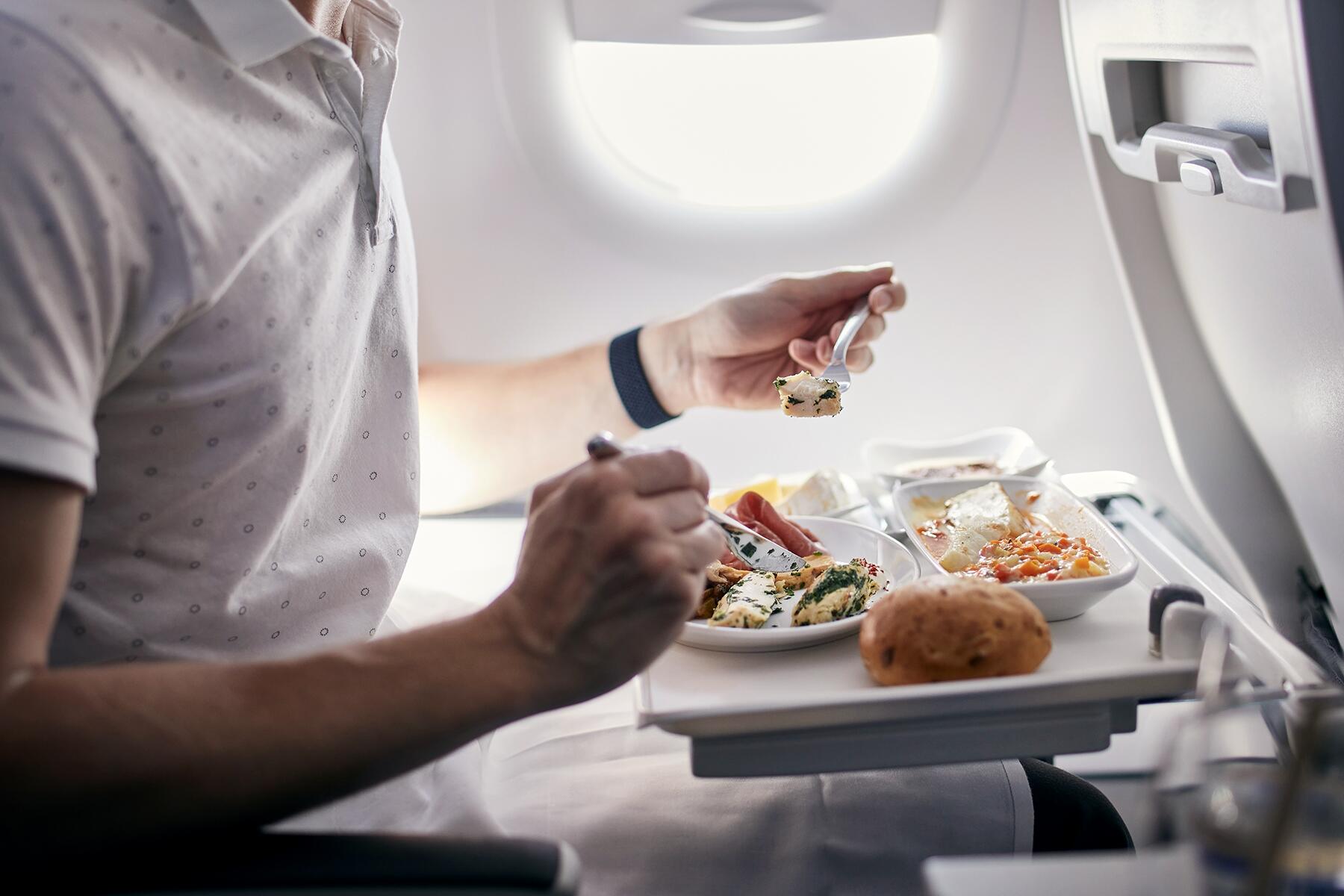It all comes down to cost.
Anybody who’s old enough to remember traveling by air before 9/11 also remembers free airline meals in economy class on domestic flights within the U.S.—mostly because they were regarded as laughably bad. But nowadays, we decry the lack of free meals on domestic flights, and remember them fondly as one of the frills of the “good old days,” when airline service was purportedly less awful.
As an airline geek, there are few things I love more than a good tray setup. I recall the days when 90-minute flights between Anchorage and Juneau yielded passengers a hot breakfast—eggs, reindeer sausage, hash browns, a giant near-frozen muffin—those paper salt-and-pepper packets that you broke in half with a satisfying crack to open—heaven.
Back then, the contract between airlines and passengers was simple—if you were in the air over an hour, your ticket included transportation and a meal you probably wouldn’t like. But despite my mouth watering in Pavlovian response to the sound of a metal lid being wrestled off the top off a plastic casserole dish at 30,000 feet, I think airlines are better off now that free coach meals on domestic flights have largely gone the way of the smoking sections and paper tickets.
Recommended Fodor’s Video
How It Started
But first, let’s review how we got here. Who decided that airline passengers needed to be fed and watered in the great blue yonder in the first place?
Airline marketing departments—that’s who. Strangely enough, the first recorded instance of meals served to airline passengers wasn’t free. On flights between London and Paris in 1919 (back when the journey took several hours because early engines had only slightly more horsepower than riding an actual horse) passengers were offered lunch boxes onboard for a nominal fee. Later, larger aircraft took to resemble flying restaurants—some offering complimentary beverages and food, others selling them as concessions.
The point of the entire thing, however, was distraction and comfort. At the time, airplanes were new technology, and they were terrifying. The odds that early flights would end before reaching their intended destination was pants-wreckingly high, and airlines needed to do something to ease everybody’s nerves. The answer was to reassure them with food—after all, nothing bad could happen to you while you were sipping a cup of tea and buttering a scone, could it?
As flights started to operate further afield, particularly in the United States, where distances between cities were longer, airlines started serving meals as conveniences, and they were convenient for both the passengers and the airline. Early aircraft were incredibly weight-sensitive, and serving meals allowed airlines to control—to the ounce—the amount of weight allocated for passenger food onboard, rather than the unknown created by encouraging passengers to bring their own food at a time when weight onboard was a big deal (some early airlines even recorded passenger weights in addition to baggage weights).
By the middle of the century, airline fares were subject to government price fixing in order to ensure reckless discounters didn’t come along and destroy the viability of the entire nascent industry. Forced to charge the exact same price as their competitors, airlines instead competed to attract passengers by serving (and promoting) lavish onboard meals.
Why It’s Better Now
When airfares were fixed and competition limited before the industry was deregulated in 1978, airlines could easily afford meals because their cost was worked right into the price fixing formula filed with government regulators.
Fares were also significantly higher in real dollars. A 1964 print ad for United Airlines gave a sample fare of $145 for a one-way, transcontinental coach ticket. That’s $1,393 in 2023 dollars—far higher than the average coach fare for a transcontinental ticket today (higher in fact, than even some discounted first class fares).
As much as I love cracking open those paper condiment packets, it’s not worth a tenfold increase in the airfare to me—and it isn’t to most other passengers either. Deregulation caused airlines to significantly pare back meals over the next several decades, and security concerns immediately after 9/11 sounded the beginning of the end for free coach meals on domestic flights. Continental Airlines was the last holdout, and they served their last free domestic coach meal in 2010. (American, United, and Delta each continue serving free meals in coach on long-haul international flights, and a select few, longer domestic flights like nonstops to Hawai’i from roughly the eastern half of the country).
So free meals are this strange cudgel wielded by airline critics in an unwinnable fight—airlines can serve meals that passengers won’t necessarily like (and resent having to pay for in the cost of their ticket whether they’re hungry or not), or they can forego the free meal and get criticized for “coming down from their peak” (the route they’ve chosen). It’s also easier on the flight crews.
Another thing we tend to forget about free meals today is the how contentious they were, as they were considered part of the fare. In the late 1990s I witnessed more than a few “I didn’t get my first choice, how dare you?” standoffs between passengers and crew, usually on flights short enough that meals really should have been irrelevant.
In the meantime, I take solace in knowing that air travel is significantly cheaper than it was in 1964, and significantly less terrifying than it was in 1919—a fair tradeoff for otherwise having to decide between chicken or pasta the next time I take to the skies.




